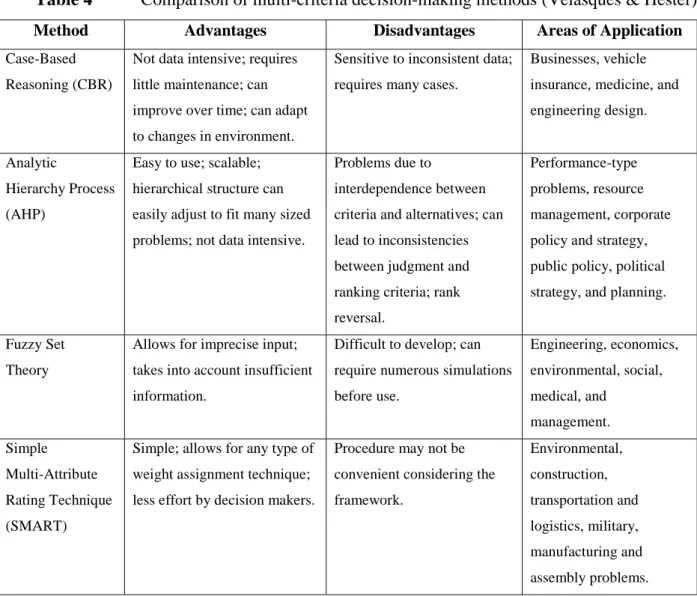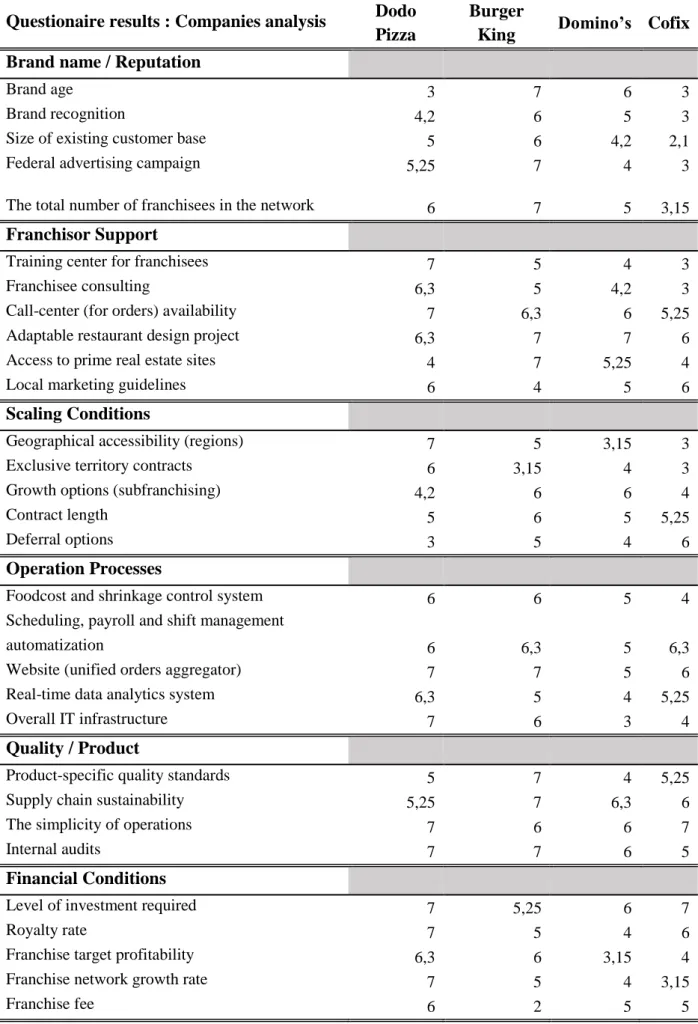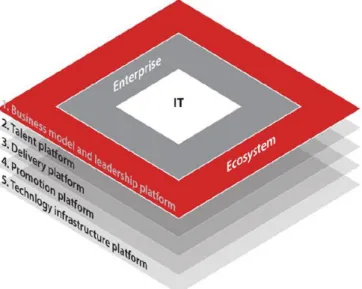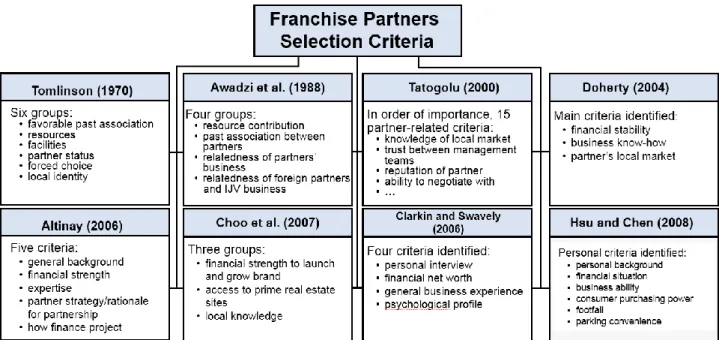To identify the main indicators of the attractiveness of franchising offers in the restaurant industry based on the study of scientific literature and analysis of practical experience. The key indicators of the attractiveness of franchise offers in the restaurant industry were established and presented in terms of.
Franchising as a business model
Background
Definition of franchising
A franchisee is a person or company that buys from the franchisor opportunities for training and assistance in establishing a business and pays a service fee (license fee) for the use of the franchisor's brand, know-how and experience. The franchisee assumes the obligation to pay monthly fees for the right to use the brand and the business system, as well as for support, education and advice from the franchisor.
Existing research on franchising
- Classification by the nature of activity
- Participants classification
- Business environment classification
- Relationship management classification
- Formation of franchise
- Main trends in the Russian market
Product franchising means the transfer of the right to sell goods produced by the franchisor in a certain territory. The main differences and characteristics of the economic concession contract are presented in Table 2.

Digitalization of franchising
In other words, digital exclusivity is the new reality of the economy in the post-industrial era. In order to better understand the context of the paper, it is necessary to provide some definitions of the term "digital platform".

Franchise selection criteria specifics
These are task-related requirements as described in Geringer's (1991) alliance research, as are the training and support found in previous franchise research (Cho, 2004; Withane, 1991) and referred to in this study as the institutionalization or professionalism of the franchisees. the franchisor. In addition to the criteria established for the task, informants also reported that criteria related to partners were important in the selection of franchisor partners. Essentially, (Brookes & Altinay, 2011) have proposed two specific parameters, namely task-related and partner-related, that franchisees use to choose their franchisor partners.
Task-related requirements include the franchisor's brand name and credibility, the franchisor's product quality, form, expansion and innovation and the franchisor's support in terms of preparation, promotion, operations and supply chain management. A strategic approach to partner selection involves a sequential research-based decision-making process, and a relatively thorough assessment of both the task and the partner-related criteria is considered important before signing a contract agreement. During the longer decision-making process, partner-related criteria are assessed through interaction with the franchisor, enabling franchisees to make informed decisions about their ability.
An opportunistic approach, on the other hand, reflects a relatively quick and simultaneous decision-making process with limited or no research undertaken to assess the task or partner criteria before signing the contract.

Hierarchic system of criteria of restaurant franchise assessment
Federal advertising campaign – the presence of a federal marketing company in the country or region promoted by the franchisor company;. The total number of franchisees in the network – the total number of restaurants in the franchisor network in the country. Call center (for orders) availability – the ability to use the services of a franchisor's call center without the need to create a separate call center;.
Convenient restaurant design project - the ability to quickly calculate a design project for a specific chosen location. General IT infrastructure – general level of production (digitalization of the kitchen, delivery system, receiving processes and order distribution). Internal audits – the presence of an internal control system (Mystery Shopper, franchisor audit).
Required investment level – franchise cost level (restaurant cost);

Franchise attractiveness evaluation in restaurant business
Research methodology
The second step was the study of ongoing research on the evaluation of franchise offers in general, as well as a detailed immersion in the specifics of the restaurant industry. The analysis mainly involved international restaurant practices and existing frameworks, in order to gather the basis of factors for experts in the further phases of the research. The third and one of the most important steps were in-depth interviews with restaurant industry experts.
Therefore, the quality of the future framework depended only on the quality of the surveyed experts and the level of their knowledge. The hierarchical system of criteria is formulated based on the first three stages of the research process and is presented in section 1.6. The hierarchy tree was formed based on an analysis of the literature and the work of previous researchers, as well as taking into account the characteristics of the industry obtained by experts.
The next step of the research procedure was to review the decision-making processes with different parameters.
Methods for multi criteria selection of alternatives
Where 𝑤𝑐𝑗 – the calculated weight for criterion c from the classification of judge j and 𝑝𝑐𝑗 – the assessment of judge j for criterion c, 𝑤𝑐 – the weight of criterion c. After obtaining all the necessary information and averaging the expert assessment according to the formula proposed by Eckenrode, the APIS software was used to evaluate the hierarchical system of the obtained factors. Thus, the main methods that can help in solving the problem of evaluating the attractiveness of a franchise are described below.
Has a simple process; easy to use and program; the number of steps remains the same regardless of the number of attributes. Its process and outcome can be difficult to explain in layman's terms; phasing out causes the strengths and weaknesses of the. The uncertainty that consists of the fact that all the indicated components of the method of summary indicators are specified to the corresponding set of possible options (mitigated using randomness).
This method combines the information about importance of the project characteristics and values of the characteristics themselves.

Framework of franchise assessment
The first step is thus the longest and most time-consuming of all steps in the framework. The first part of the study generated the following results: all criteria were evaluated using the 1 to 7 Likert scale. Thus, the results of the expert survey were calculated, the table of results is presented below, and detailed responses from each expert can be seen in Appendix 1 of this survey.
Green is the larger weight of the benchmark, red is the smaller weight of the benchmark. A quantitative part of the study was carried out in the APIS program, for a general understanding a screenshot of the program interface is presented below, but a detailed analysis is presented in the third chapter of this study. In the last section of the second chapter, the developed framework is presented and described.
Its use will be discussed in the last chapter of this study using the example of the four most specific networks in the restaurant franchise market in Russia.

Application of the framework to the case restaurant franchises
Market overview
For further full-fledged development, Russian franchising needs complete and reliable statistics of franchises on the market. There is practically no information about the quality of at least one third of the concept, confirmed by the successful and long-term activity of the franchisee. Market experts have also repeatedly drawn and continue to be aware of the existence of downright "fake".
The lack of clear criteria that the franchisor must meet when inviting other entrepreneurs to invest their money, strength and energy in their concept harms all market participants without exception.
Case companies’ description
Burger King is an American company, owner of a global chain of fast food restaurants Burger King, specializing in hamburgers. At the moment, Burger King in Russia has a master franchise represented by «BURGER RUS LLC», a joint company of Burger King Europe. Manages the world's largest chain of pizzerias (in terms of revenue; Pizza Hut is inferior in the number of restaurants).
Cofix is an Israeli coffee shop, bar and supermarket chain founded in 2013 by Avi Katz, which uses a fixed-price menu system. The chain sells fresh coffee at a fixed and low price, as well as associated food products, under the motto 'fresh coffee, fixed price'.
Framework application stage by stage
Now, however, the last phase remains – to combine all six groups of characteristics to calculate the final index for each of the companies. The developed framework for assessing the attractiveness of the franchise offer of restaurants was therefore successfully applied using four companies as an example. In the last chapter of the study, the author applies the developed framework, and at the same time explains each of its stages.
Based on the analysis of six groups of factors, aggregation was done and an assessment of the most attractive offers for the investor was compiled. This means that Dodo Pizza currently has the most attractive franchise offer on the market of the Russian Federation, and Cofix the least among the selected companies. Among these criteria, the criteria are supported by IT solutions, their role in franchising was described in the first chapter of the study.
The latest trends of the industry were also studied and the features associated with its digitization were highlighted. In the third chapter, the application of the framework led to the assessment of four franchise offers from companies in the Russian restaurant market. The theoretical contribution of the thesis is the development of a universal framework for assessing the attractiveness of franchises in the restaurant industry.

Questionnaire results: relative importance of characteristics
Survey for Franchise Attractiveness evaluation
Existing customer base size – the size of the current consumer customer base. Rate the characteristics of the “Financial Conditions”, using a 7-point scale, where 7 indicates that it has an extremely important impact and 1 indicates that it has no impact at all. Rate the characteristics of “Franchisor Support,” using a 7-point scale, where 7 indicates it has an extremely important impact and 1 indicates it has no impact at all.
Please rate the characteristics of the “scale conditions” on a 7-point scale, where 7 means extremely important influence and 1 means no influence at all. Exclusive Territorial Agreements – the possibility of concluding an agreement for the entire geographic region or territory, without the right to transfer to other franchisees. Quality standards for individual products – existence of network quality standards and monitoring of their compliance.
Rate the "Quality/Product" characteristics on a 7-point scale, where 7 means extremely important impact and 1 means no impact at all.






